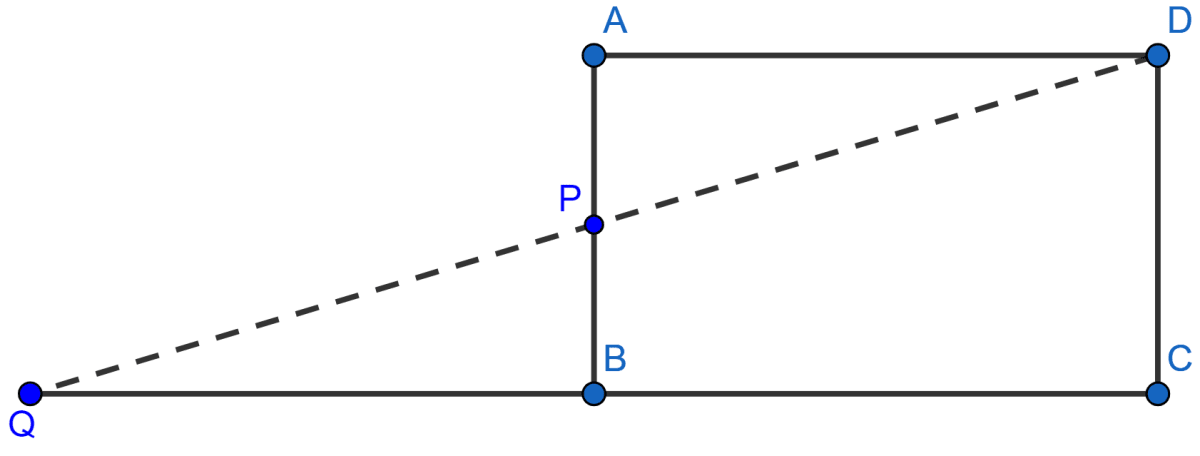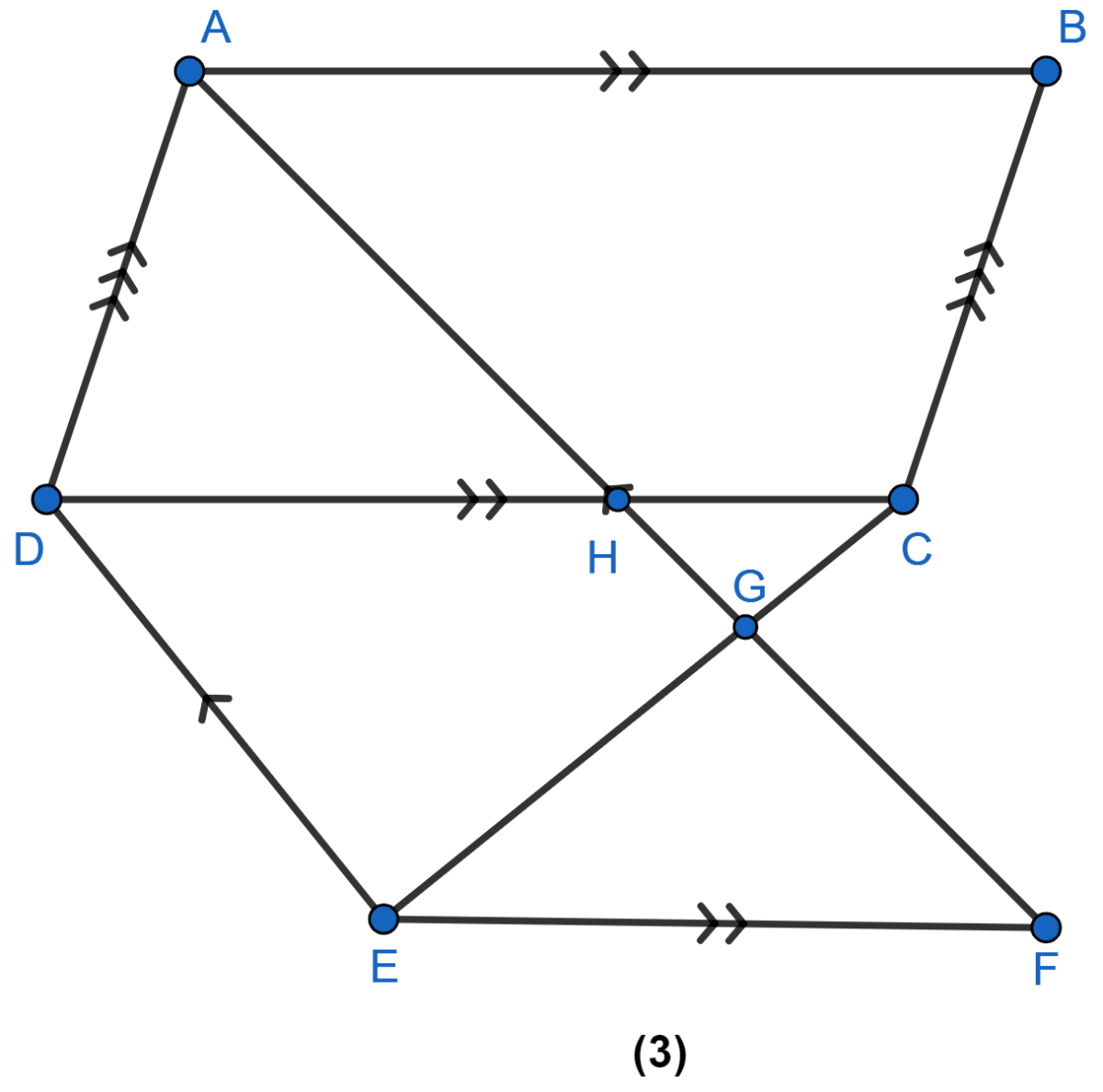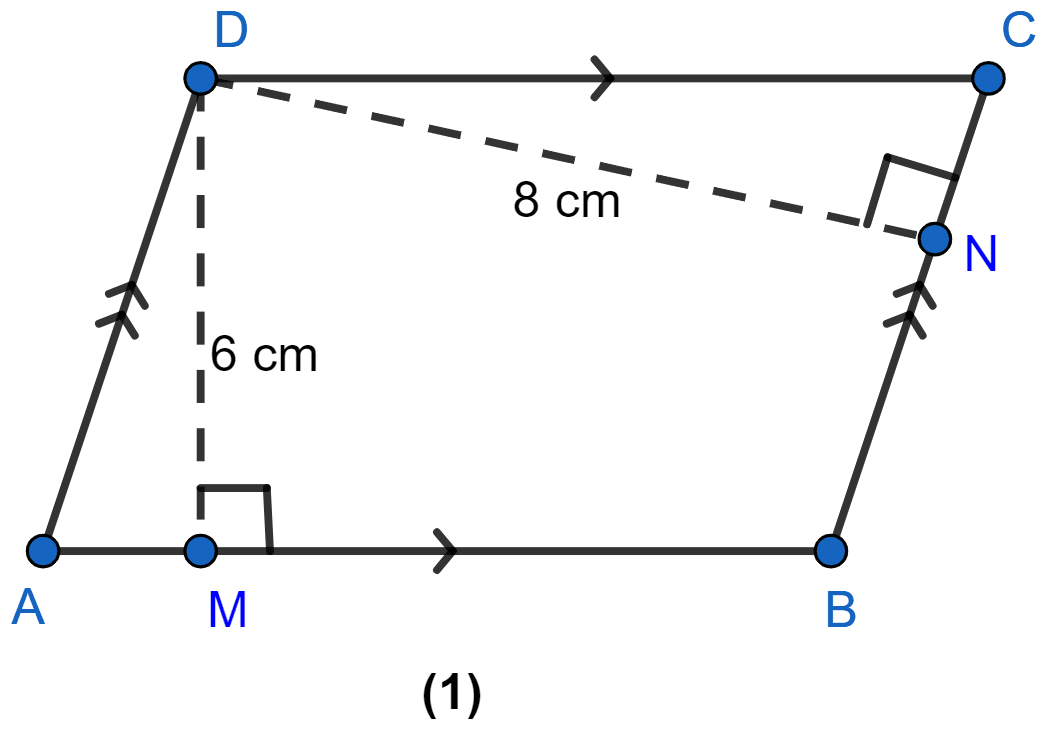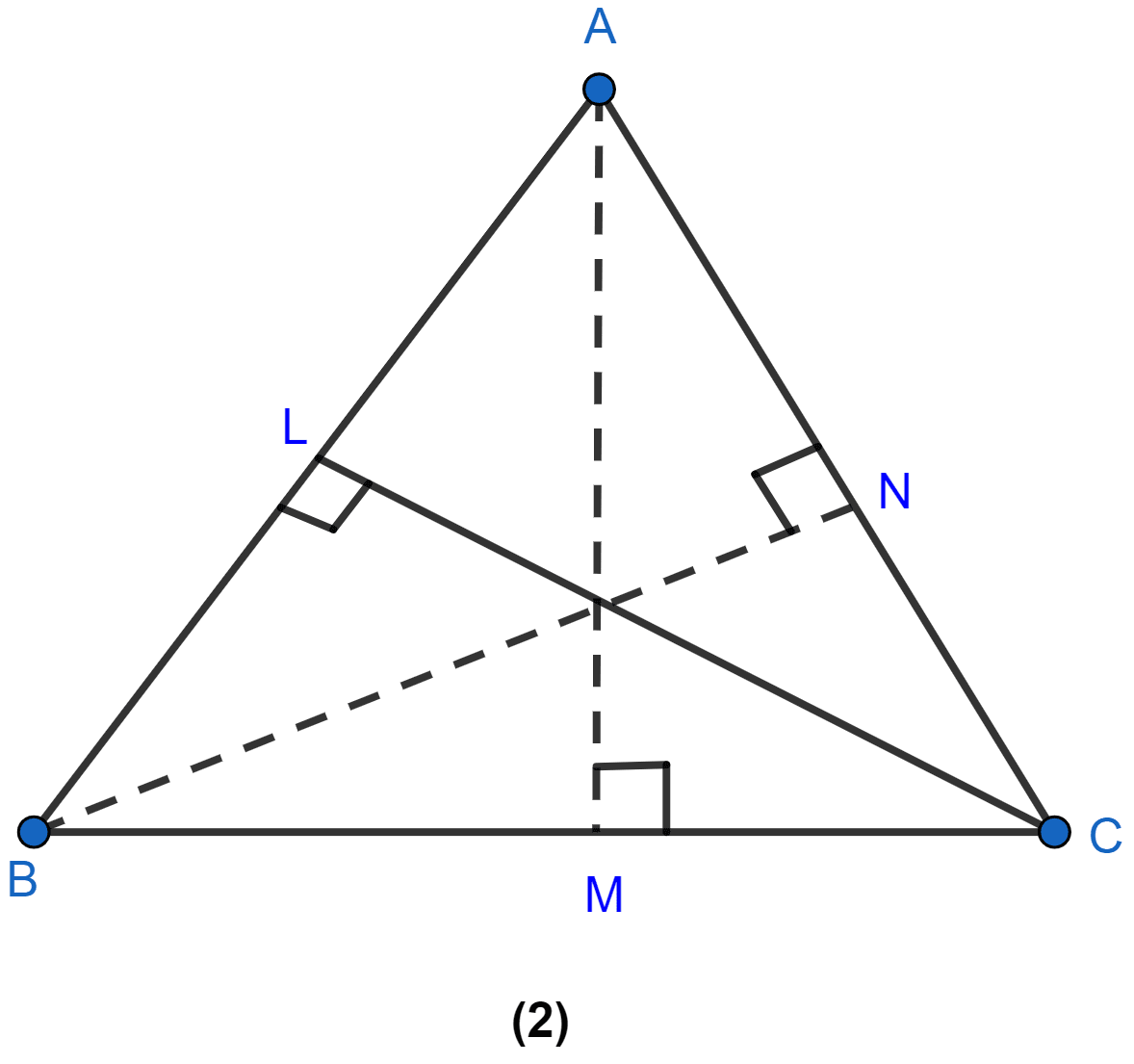Mathematics
ABCD is a rectangle and P is the mid-point of AB. DP is produced to meet CB at Q. Prove that the area of rectangle ABCD = area of ∆DQC.
Theorems on Area
21 Likes
Answer
In ∆APD and ∆PQB,

AP = BP [Since P is the mid-point of AB]
∠DAP = ∠QBP [each angle is 90° as ABCD is a rectangle]
∠APD = ∠BPQ [Vertically opposite angles are equal]
So, ∆APD ≅ ∆PQB [By using ASA axiom]
So, area of ∆APD = area of ∆PQB …….(i) (As both triangles are congruent.)
From figure,
area of rectangle ABCD = area of ∆APD + area of quad. PBCD
= area of ∆PQB + area of quad. PBCD ……(From i)
= area of ∆DQC.
Hence, proved that area of rectangle ABCD = area of ∆DQC..
Answered By
15 Likes
Related Questions
In figure (3) given below, AB || DC || EF, AD || BE and DE || AF. Prove that the area of DEFH is equal to the area of ABCD.

Any point D is taken on the side BC of a ∆ABC and AD is produced to E such that AD = DE, prove that area of ∆BCE = area of ∆ABC.
In figure (1) given below, the perimeter of the parallelogram is 42 cm. Calculate the lengths of the sides of the parallelogram.

In the figure (2) given below, the perimeter of ∆ABC is 37 cm. If the lengths of the altitudes AM, BN and CL are 5x, 6x, and 4x respectively, calculate the lengths of the sides of ∆ABC.
